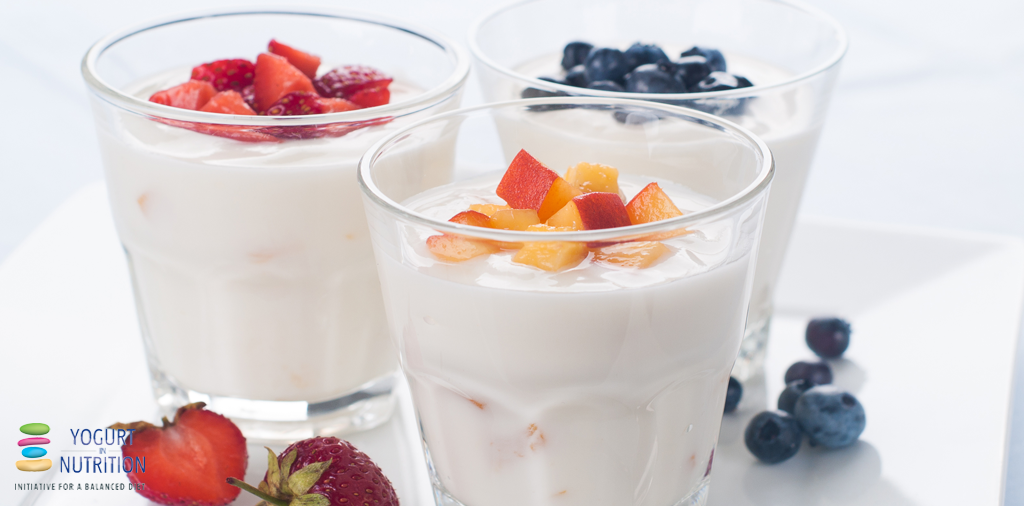You may already be choosing yogurt as a great source of healthy nutrients, especially good for maintaining strong bones. It seems, though, that the benefits to bones may only be the tip of the iceberg when it comes to the health effects of yogurt consumption.
Recently a swathe of studies has clearly pointed to a link between consumption of dairy products, particularly yogurt, and a reduced likelihood of type 2 diabetes and risks for heart disease and other cardiovascular illnesses. Until now we’ve only been able to guess at how yogurt might protect against these long-term, life-threatening conditions. But this latest study from Brazil provides some fascinating clues – and reveals that it may not be a benefit shared by all the dairy food types.
The missing link: inflammation
Type 2 diabetes and cardiovascular diseases have something in common: they are all associated with long-term, low-grade inflammation. This chronic inflammation comes hand-in-hand with obesity and can be spotted by its tell-tale signs – cytokine chemicals in the bloodstream. A rise in these pro-inflammatory markers can be a red warning light signalling any of an array of disorders such as insulin resistance, raised blood pressure, and an upset in lipid profiles.
The authors of this study set out to investigate the effects of consuming dairy products – yogurt, milk and cheese – on these inflammatory markers in the blood. And they found some surprising results.
Comparing dairy consumption with inflammatory statue
The authors looked at data from 259 adults who were taking part in the Health Survey for Sao Paulo – a study of people’s health and living conditions in the city.
The participants were asked to complete a 24-hour food frequency questionnaire on how often they consumed yogurt, milk and cheese; this was then cross-referenced against the inflammatory markers in their blood samples. The findings were corrected for age, smoking and energy intake.
Yogurt consumption was linked with lower signs of inflammation…
Brazilians generally don’t eat much by way of dairy products. The median intake of yogurt, milk and cheese in this study was 10, 118.8 and 10.7 grams per day respectively. Most people who consumed yogurt chose fruit-flavoured or plain sweetened yogurt. The most popular cheeses were mozzarella, cream cheese and parmesan.
‘… the overall analysis demonstrated that an increase in yogurt consumption could have a linearly protective effect on inflammation’ – Gadotti TN et al, 2018
The authors divided the participants into an inflammatory group and a non-inflammatory group according to their levels of inflammatory markers. The results showed that people who ate the most yogurt tended to have fewer inflammatory markers than those who rarely ate yogurt. So, the chances of being in the inflammatory group among the most frequent yogurt consumers were only one-third compared with those who ate the least yogurt. And the more yogurt people ate, the better their chances of having a lower inflammatory status.
…whereas eating cheese was linked to higher signs of inflammation
It was a different story when it came to cheese. People who most frequently ate cheese had more than double the chance of being in the inflammatory group compared with those who ate the least cheese.
Milk seemed to have a neutral effect on inflammatory status.
Is yogurt different from cheese because it’s lower in fat?
The authors suggest that yogurt and cheese may exert different effects on inflammation because of their differing fat content.
It has previously been shown that saturated fatty acids, which generally make up about 70% of total dairy fat content, are associated with pro-inflammatory markers. So, it stands to reason that a yogurt – which has about 3% total fat – will be less likely to increase inflammatory makers than mozzarella or parmesan cheese, which contain about 25%-30% and proportionately more saturated fatty acids.
‘… a new perspective on existing evidence demonstrating the importance of assessing the contribution of dairy products on diet and their effect on the development of non-communicable diseases and associated risk factors.’ – Gadotti TN et al, 2018
Find out more: read the original article.
Source: Gadotti TN, Norde MM, Rogero MM et al. Dairy consumption and inflammatory profile: a cross-sectional population-based study, Sao Paulo, Brazil. Nutrition. 2018;48:1-5.



